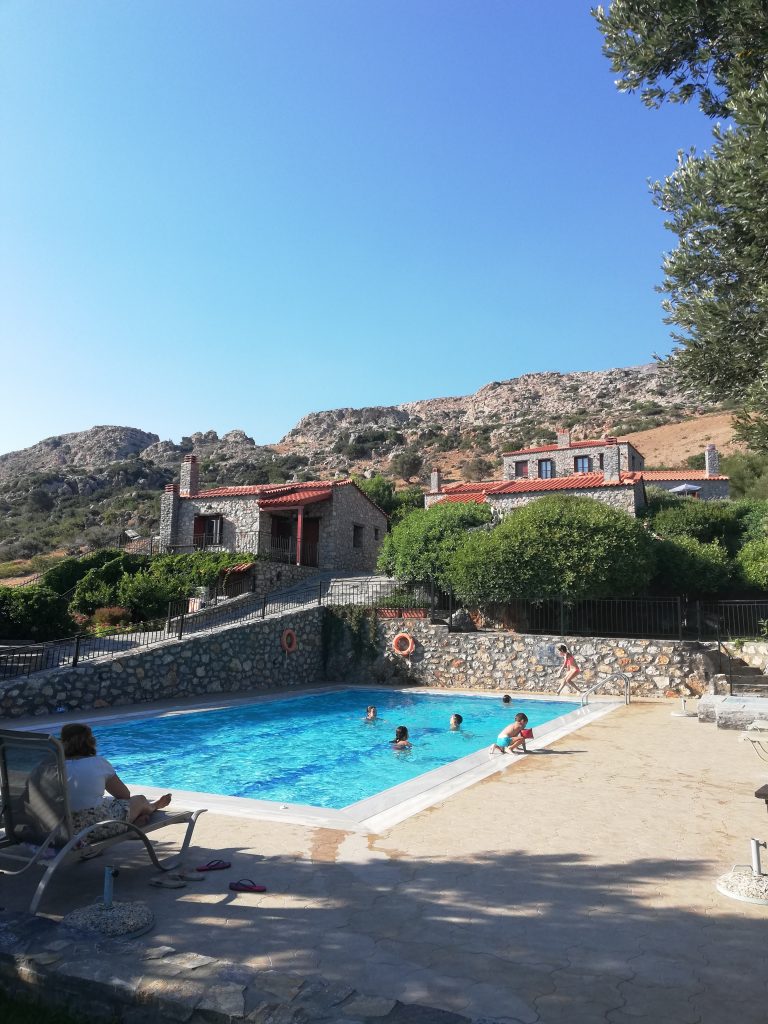2018 Perseid expedition to Crete
The first half of August only allows a limited time each night for meteor observations under dark circumstances at my home place in Norway. The sky gets dark enough for about two to three hours in the zenith, but is still quite bright closer to the horizon. Weather conditions is also generally unstable around the time of the Perseid maximum, usually only allowing one or two nights of observations during the week of peak activity. The favorable lunar conditions this year, inspired me to raise my stakes and plan for a meteor expedition. My target was a place that hopefully could provide a week of good weather conditions and dark skies during the week of main Perseid activity. After some considerations I decided to head for the island of Crete, thus allowing to combine the meteor expedition with a week of sun and sea with the rest of my family.
After consulting with Koen Miskotte from the Dutch Meteor Society, I decided to choose a location on the southern side of island. Koen had experience from an earlier meteor expedition to this part of the island, and talked warm about the excellent sky conditions far away from the busy tourist resorts on the northern side. Weather statistics for August also seemed favorable, and my choice fell on the little village of Agia Paraskevi, situated on a hillside about 200 meters over the Libyan Ocean. After a thrilling ride over the mountain on steep and narrow roads, I arrived at Vrachos Villas in the afternoon on August 6. My rented house was built of stones, perfectly fit in the surroundings of mountains, grey earth and olive trees. The sunset over the Libyan ocean was breathtaking, and after enjoying a tasty meal of homemade food in the onsite restaurant, I was more than ready for a night of meteor observations under foreign skies.

My rented house in the village of Agia Paraskevi, situated on a hillside some 200 meters above the Libyan Ocean.
First night of observations.
Strong gusts of wind down the mountainside, made me choose an observation site partially protected from the wind, in a field of olive trees in walking distance from my house. This was closer to the local light pollution than I liked, but because of my camera equipment, I did not want to be openly exposed to the strong gusts of wind either. I decided to start observations early, to check activity from the CAP, KCY and NDA, before the Perseid radiant reached a useful altitude. I started observations 19:00 UT. Sky was clear, but the Lm only reached 6.2, a bit hampered by the lights from a nearby house. By 20:30 UT I had seen a total of 17 meteors, by which 10 was SPO, 2 CAP, 2 KCY, 2 NDA and 1 ANT.
19:00 UT – 20:30 UT, Teff:1.50, F:1.00, Lm:6.20, RA:292, DEC: +40
SPO: 10 meteors: -1(1), 0(1), 2(1), 3(3), 4(2), 5(1), 6(1).
CAP: 2 meteors: 0(1), 4(1)
KCG: 2 meteors: -1(1), 4(1)
NDA: 2 meteors: 1(1), 5(1)
ANT: 1 meteor: 4(1)
After a 30 minutes break, I was eager to check out Perseid activity, after witnessing a beautiful -1 mag earth grazer during the break. Activity the first hour was quite good with 8 Perseids, despite the radiant was still low in the sky. I had decided to look in a northern direction where the sky was at its darkest. This made it impossible to make certain shower associations of the showers in the southern sky, like the SDA and the CAP. These meteors were therefore counted as SPO. From 22:00 UT the sky suddenly got a lot darker. An automatic timer had switched of the most annoying lights from the nearest house, leaving the sky black as coal with a Lm close to 6.5. Despite a darker sky, Perseid rates were fairly constant with 7 meteors observed.
The third hour between 23:00 UT and 00:00 UT turned out to be the best, with 18 Perseids observed. Highlights in this period was a stunning, yellow -3 mag Perseid in UMA, leaving a persistent trail for a couple of seconds. Shortly after an even more impressive, bluish, -2 mag, slow moving meteor caught my attention in the outskirts of my observing field, continuing for about 3 seconds before extinguishing over the sea. This was probably a meteor belonging to the Capricornid shower. The last hour Perseid rates declined to 5, but sporadic activity was still good with 14 meteors. A tired but happy meteor observer decided to call it a night at 01:05 UT, knowing he had 7 more nights of rising meteor activity to come!
21:00 UT– 22:00 UT, Teff: 1.00, F: 1.00, Lm: 6.23, RA: 300, DEC: +40
PER: 8 meteors: -2(1), 0(1), 1(2), 2(1), 4(2), 5(1)
SPO: 6 meteors: 1(2), 4(2), 5(2)
KCG: 1 meteor: 3(1)
22:00 UT – 23:00 UT, Teff: 1.00, F: 1.00, Lm: 6.48, RA: 300, DEC: +40
PER: 7 meteors: 2(1), 4(2), 5(3), 6(1)
SPO: 13 meteors: 1(1), 2(1), 3(5), 4(1), 5(3), 6(2)
KCG: 1 meteor: 5(1)
23:00 UT – 00:05 UT, Teff: 1.050, F: 1.00, Lm: 6.48, RA: 300, DEC: +40
PER: 18 meteors: -3(1), -1(1), 0(1), 1(2), 2(4), 3(6), 4(1), 5(1), 6(1)
SPO: 11 meteors: -2(1), 3(1), 4(5), 5(3), 6(1)
KCG: 1 meteor: 0(1)
00:05 UT – 01:05 UT, Teff: 1.00, F: 1.00, Lm: 6.46, RA: 300, DEC: +40
PER: 5 meteors: 2(1), 3(1), 4(1), 5(2)
SPO: 14 meteors: 2(3), 3(3), 4(6), 5(2)
KCG: 1 meteor: 3(1)

